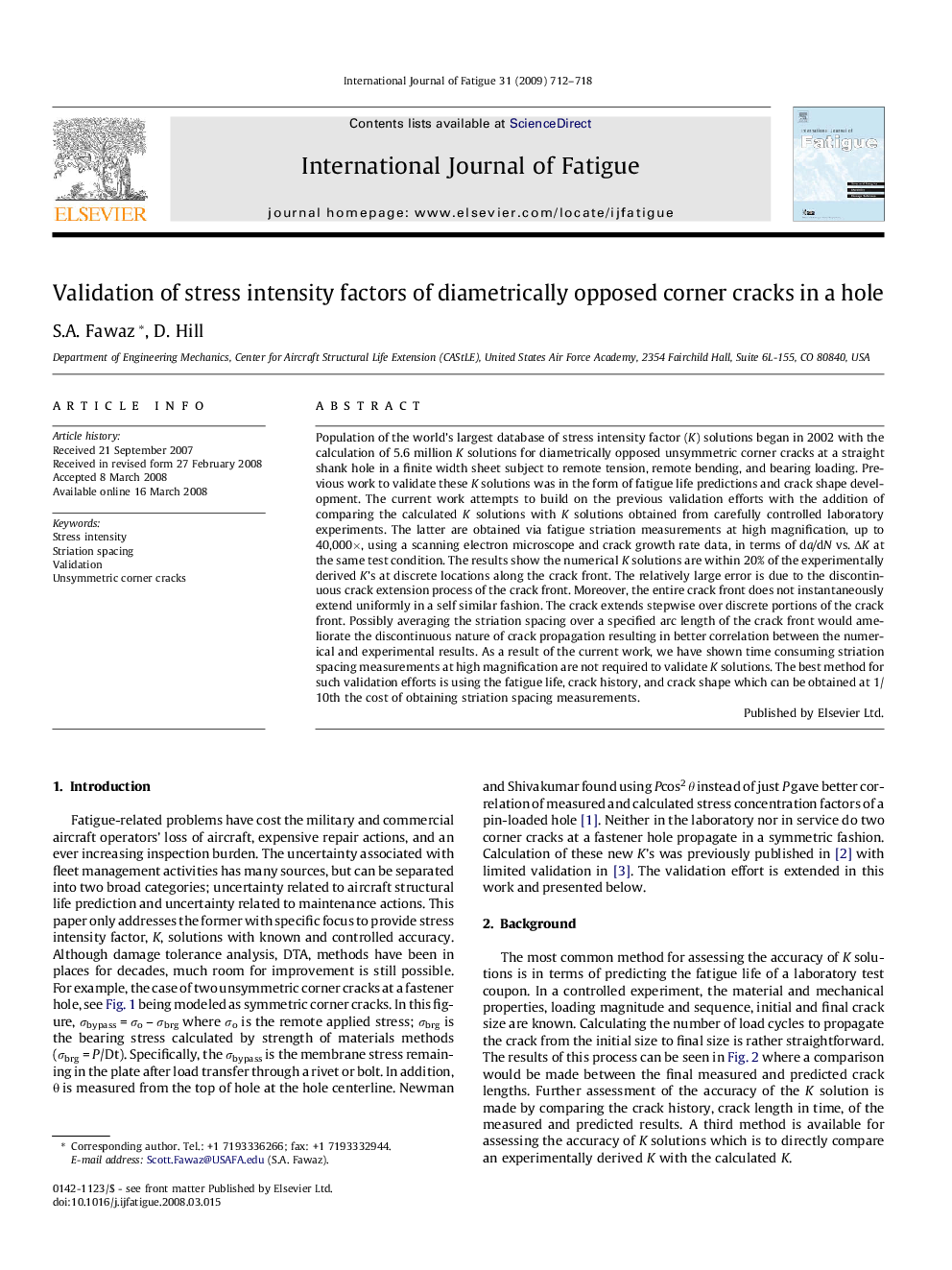| Article ID | Journal | Published Year | Pages | File Type |
|---|---|---|---|---|
| 781564 | International Journal of Fatigue | 2009 | 7 Pages |
Population of the world’s largest database of stress intensity factor (K) solutions began in 2002 with the calculation of 5.6 million K solutions for diametrically opposed unsymmetric corner cracks at a straight shank hole in a finite width sheet subject to remote tension, remote bending, and bearing loading. Previous work to validate these K solutions was in the form of fatigue life predictions and crack shape development. The current work attempts to build on the previous validation efforts with the addition of comparing the calculated K solutions with K solutions obtained from carefully controlled laboratory experiments. The latter are obtained via fatigue striation measurements at high magnification, up to 40,000×, using a scanning electron microscope and crack growth rate data, in terms of da/dN vs. ΔK at the same test condition. The results show the numerical K solutions are within 20% of the experimentally derived K’s at discrete locations along the crack front. The relatively large error is due to the discontinuous crack extension process of the crack front. Moreover, the entire crack front does not instantaneously extend uniformly in a self similar fashion. The crack extends stepwise over discrete portions of the crack front. Possibly averaging the striation spacing over a specified arc length of the crack front would ameliorate the discontinuous nature of crack propagation resulting in better correlation between the numerical and experimental results. As a result of the current work, we have shown time consuming striation spacing measurements at high magnification are not required to validate K solutions. The best method for such validation efforts is using the fatigue life, crack history, and crack shape which can be obtained at 1/10th the cost of obtaining striation spacing measurements.
